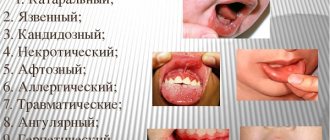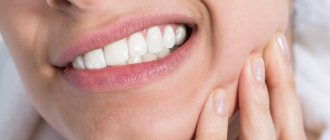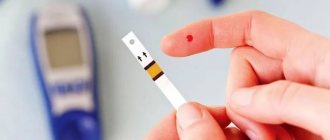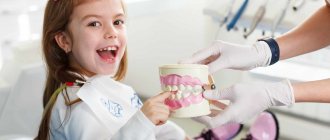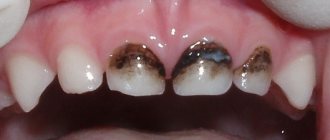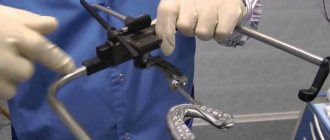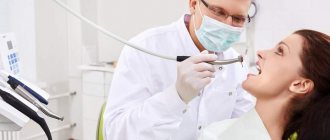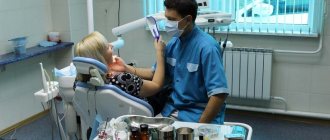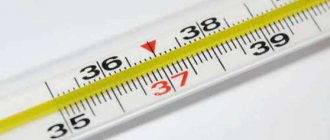Cough is a protective reaction of the immune system to the entry of various allergens and pathogens into the body. It is not always a sign of any disease, especially in early childhood. In order to understand whether cough treatment in newborns and infants is required or whether lifestyle adjustments are simply necessary, you need to understand the likely causes of the condition.
Specialists from the SM-Doctor clinic will tell you what to do if a baby has a dry or wet cough, when to urgently call a doctor, and what home measures you can take to help your child without harming his health.
Causes of cough in children of the first years of life
The most likely culprits of cough in children are ARVI - acute respiratory viral infections (influenza, adenovirus, etc.). They affect the upper or lower respiratory tract, causing mucus production. The body, trying to get rid of mucus, launches a defense mechanism in the form of coughing.
Other likely causes may be allergic reactions, primary bacterial infections, such as whooping cough, tuberculosis, or secondary bacterial complications of ARVI, such as pneumonia, bronchitis, bronchiolitis.
The culprits of dry and wet cough in an infant are sometimes:
- too dry and warm air in the room where the baby is;
- dust;
- strong, overpowering odors, such as laundry detergent or fabric softener, air freshener, perfume, scented candles and oils;
- posterior rhinitis is a disease in which mucus drains down the back wall of the throat, causing a reflex cough, especially when lying down;
- increased salivation;
- regurgitation;
- general or local hypothermia of the body.
In some cases, a persistent cough may indicate pathologies of the cardiovascular system, reflux disease, and foreign matter entering the respiratory tract.
Fever due to ARVI and influenza
Fever is a temporary increase in body temperature due to some illness. Fever is one of the symptoms of ARVI and influenza.
High temperature is the body’s protective reaction to a pathogen that has entered the body. Many viruses and bacteria stop reproducing at temperatures above 37-38°C, and the formation of antibodies is also stimulated.
There are “pink” and “white” fever.
For pink fever:
- heat production and heat transfer mechanisms are adjusted correctly
- baby's skin is pink and hot to the touch
For white fever:
- centralization of blood circulation (blood circulation is aimed at preserving the functioning of the heart, lungs, brain) and disruption of blood microcirculation
- limbs are cold, pale
- bluish leather with marble pattern
- "goose pimples"
- chills
Such a course of fever may be unfavorable.3
When you urgently need a doctor
In the vast majority of cases, infants encounter viral infections that do not require specific treatment and go away on their own with symptomatic care.
You should be wary and seek advice from a pediatrician if your child has:
- signs of respiratory failure: shortness of breath, rapid, shallow breathing, pale skin;
- the appearance of blood in the sputum;
- clearly visible wheezing when breathing;
- paroxysmal cough, when the baby does not have time to catch his breath between shocks, turns blue, and experiences a lack of air;
- combination of cough with high fever, rash, swollen lymph nodes;
- weakness, lethargy, refusal to eat and drink, lack of response to your name, loud noises and favorite toys.
A condition that experts call false croup or stenosing laryngotracheitis deserves special attention. This is an acute viral respiratory disease that can lead to respiratory arrest in young children. Its main symptoms are:
- barking, croaking cough;
- hoarseness of voice;
- night coughing attacks.
In some cases, this condition develops swelling of the larynx, which is why the child cannot clear his throat fully and begins to choke. At the first signs of false croup, you need to call an ambulance as quickly as possible or take the baby yourself to the emergency room of the nearest hospital.
First symptoms of the disease
It is often difficult to discover that an infant is sick, because he cannot tell what is bothering him. However, in the case of a runny nose, there are quite obvious external symptoms that will help adults identify the disease in a timely manner and begin treatment.
Your baby has a runny nose if:
- he began to sneeze frequently, and his eyes began to water;
- you notice that the child has stopped breathing freely - this indicates nasal congestion. This symptom should not be ignored, because nasal congestion and, as a result, difficulty breathing at night reduces the quality of sleep and can lead to hypoxia - oxygen starvation of the cells and tissues of a growing child's body;
- mucus discharges from the nostrils. If you pay attention to the color and nature of the discharge, you can make an assumption about the nature of the disease even before consulting a doctor: clear mucus indicates a virus that has entered the body, and a thick white, yellowish or greenish secretion indicates the bacterial nature of the disease;
- in the case of infectious rhinitis, babies under one year of age may have a fever, and then treatment of a runny nose should not occur without the participation of a pediatrician.
Diagnostics
At the appointment, the pediatrician carefully examines the baby, conducts initial diagnostics and, if necessary, prescribes laboratory or instrumental tests.
In order to determine the possible cause of the cough and assess the current condition of the baby, the following is carried out:
- auscultation (listening) of the lungs;
- laboratory blood tests with a detailed leukocyte formula;
- various allergy tests if indicated;
- chest x-ray;
- ultrasound examination of the heart.
Next, the specialist, assessing the results of tests and examinations, establishes an accurate diagnosis and prescribes appropriate therapy.
What is adenovirus infection?
Having found out that adenoviral infection is a type of acute respiratory viral infection, we should consider it in more detail.
The main portal of infection is the upper respiratory tract, and less commonly the conjunctiva of the eyes. It has been noted that the virus multiplies at tremendous speed, easily penetrates the blood from the affected area and spreads further throughout the body. In addition to blood vessels, adenoviruses can use lymph nodes and lymphatic tracts as a road.
The causative agent is a virus containing a DNA molecule. The infection lingers on the mucous membranes of the respiratory system and descends below, affecting the intestines. Quite often, lymphoid tissue is infected. The conjunctiva of the eyes also suggests that adenoviruses may be the culprit2.
Treatment of cough in newborns and infants
For young children, adequate therapy should be carried out, based on objective information obtained during the examination and collection of anamnestic data. Treatment of cough in infants should only be carried out by qualified pediatric specialists: pediatricians, infectious disease specialists, allergists.
Depending on the indications, the treatment package may include:
- antipyretics;
- antibacterial drugs for confirmed bacterial infection;
- medications that thin sputum;
- antitussives that block reflex cough;
- antihistamines and hormonal drugs.
A competent doctor will also give parents individual recommendations on establishing an optimal microclimate in the child’s room, proper nutrition, and daily routine. The correct regimen for a baby is the basis for a quick recovery from any disease.
How to help infants at home with a cough
The most important rule is never to give children any medications without consulting a doctor and not to practice traditional medicine techniques, even if they were recommended by a beloved grandmother, an experienced neighbor, or a mother of five children from an online forum.
The main task of parents in the treatment of dry or wet cough is general support of the body. What does that require?
- Keep the room where the baby is at no more than 22 degrees Celsius with a humidity of at least 40%. The drier the air, the more time and effort the body needs to moisturize it. Inhaling cool, humidified air facilitates the functioning of the respiratory system, helping them quickly cope with mucus and remove it out.
- Give the baby plenty of water. The optimal drink for newborns and infants is mother's milk, but with artificial feeding or pathological fluid loss, clean water can and should be given. Liquid is necessary to maintain the rheology (fluidity) of sputum: the thinner the mucus, the easier it is for the child to cough it up.
- Periodically change the baby's position in the crib and keep him in an upright position more often. Such measures contribute to accelerated mucus discharge and improved nasal breathing.
- Walk. Walking in the fresh air is an excellent cure for coughing children. The main thing is that the baby feels satisfactory, does not have a fever and does not suffer from diseases that require strict bed rest. Cool, fresh air, entering the child’s respiratory tract on the street, condenses and moisturizes the mucus, thereby accelerating the process of mucus discharge and overall recovery. Walking is especially useful for children with whooping cough, laryngotracheitis, bronchitis and other viral or bacterial infections of the respiratory system (important: in consultation with a doctor!).
- Do not force him to eat if the baby categorically refuses. During any illness, all the body’s forces are aimed at fighting the “invader,” and digestion takes time and reduces the intensity of the immune system’s attacks on the infection.
What you should definitely not do:
- give infants both antitussives and expectorants/mucolytics without a doctor’s prescription;
- experiment with methods of folk practices, even proven by the experience of the older generation;
- leave the street if the child develops a wet cough after a dry cough (this means that the air has fulfilled its task - it has moistened the sputum, and now it is easier for the baby to cough);
- wrap up, overheat the baby.
Nasal hygiene
Physiological runny nose does not require correction with medications. At the same time, it is necessary to help the baby get rid of excess mucus, which makes nasal breathing difficult. For this purpose, cotton swabs moistened with saline are used. They are placed in the nasal passages and then removed with twisting movements.
Mechanical or electric aspirators are more effective. The Aqualor Baby aspirator is easy to use. The innovative mucus capture system in the Aqualor Baby aspirator ensures a hygienic procedure - during aspiration, mucus accumulates in a special reservoir. The comfortable mouthpiece has teeth holders, making the suction procedure convenient. The ergonomic body has a special recess for easy grip - the aspirator does not slip out of the hand during the procedure.
A few minutes before the procedure, 2-3 drops of a sterile isotonic solution are instilled into the nose, preferably one based on sea water, such as Aqualor Baby spray or drops. This helps to thin the exudate and dissolve crusts and clots, which increases the effect of aspiration. Usually the procedure is carried out 3-5 times a day.
Prevention
It will not be possible to protect a child from all diseases, but it is possible to reduce the risk of developing serious pathologies and prepare the body to face infections. To do this you need:
- carry out preventive vaccination of babies from birth against diseases such as tuberculosis, whooping cough, diphtheria;
- devote time to hardening the kids;
- walk a lot with your child in the fresh air;
- regularly ventilate and humidify the room with the newborn;
- Don’t be overzealous when dressing your baby for a walk;
- ensure adequate physical development through massage, gymnastics, swimming, etc.
- promptly contact specialists for the treatment of any diseases.
You can learn more about the types of children’s cough, measures of assistance and treatment options at a personal meeting with the doctors of the SM-Doctor clinic. Sign up for a consultation by phone or on the website, ask questions using the online form to get the information you are interested in.
Advantages of the Aqualor Baby children's series
To care for the nasal cavity of a newborn, it is advisable to use ready-made preparations, the sterility of which is guaranteed. Aqualor baby drops and spray with a “soft shower” attachment contain natural sea water and do not contain artificial additives, so they can be used without harm from the first days of life both for hygienic procedures and for the treatment of rhinitis of various etiologies.
Natural microelements of sea water stimulate the formation of local immunity, increasing the resistance of the nasal mucosa to microorganisms.
How to rinse a child's nose with saline solution? When using drops, the baby is placed on his back and, without plunging the tip of the bottle deep into the nose, squeeze 2-3 drops into each nostril. When using a spray, the solution is injected into the child's nasal cavity with the body in an upright position, preferably sitting in the arms of an adult (if the child already knows how to sit). In this case, the child's head should be straight and slightly tilted forward. The tip of the balloon is inserted into one of the halves of the nose, pressed on the sprayer and held for several seconds, thus rinsing this half of the nose. Then repeat the procedure with the other half of the nose.
The procedure can precede aspiration or be carried out in the morning and evening as part of daily hygiene. In conditions of dry, heated air, it is advisable to periodically irrigate the nasal passages using a spray.
Question answer
Mom insists on using mustard plasters, but the baby is only 2 months old. Can he be given mustard plasters or cough jars?
In no case. They are contraindicated for children, since such measures can lead to burns and mechanical injuries to the skin, and unpredictable allergic reactions.
We are vaccinated with DPT, but the child still coughs, like whooping cough. What to do?
Yes, preventive vaccination does not guarantee that the disease is excluded, but it reduces the risk of serious complications many times, hundreds of times. There are special treatment protocols for whooping cough, so you should first contact your attending pediatrician for laboratory tests. It is quite possible that the suspicions will be in vain.

